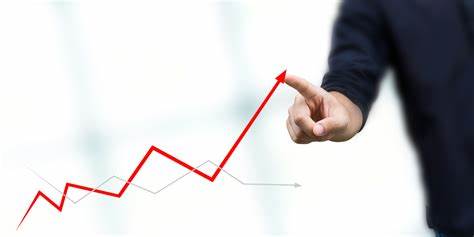备考干货:IGCSE经济单词整理(A-C)
在IGCSE经济学学习中,词汇是我们必须要攻克的一大难关,各种复杂难记并且数量庞大的IGCSE经济单词甚至连英语母语学生都往往感到束手无策。为了帮助同学们做好IGCSE经济备考,A+国际教育小编特别为大家整理了一份IGCSE经济单词表,篇幅有限 ,本文只更新到A-C,感兴趣的同学们记得持续关注哟!

Absolute minimum: The output value of the lowest point on a graph over a given input interval or over all possible input values. An absolute minimum point is a local minimum point and occurs at an endpoint of the given input interval.
Absolute vs. Relative Price: Absolute price is the number of dollars that can be exchanged for a specified quantity of a given good. Relative price is the quantity of some other good that can be exchanged for a specified quantity of a given good. Suppose we have two goods A and B. The absolute price of good A is the number of dollars necessary to purchase a unit of good A. The relative price of good A in terms of B is the amount of good B necessary to purchase a unit of good A. The change in relative prices is not the same thing as changes in absolute prices. Sometimes, the absolute prices of goods may change but relative prices may remain constant. In general, we measure absolute prices in terms of dollars and relative prices in terms of units of some other good. However, many times we measure relative prices in terms of dollars also keeping in mind that the word dollar is being used to refer not to a piece of green paper but to a basket of goods. In microeconomics, the word prices always refer to relative prices.
Angle: The amount of rotation in a turn. An angle can be thought of as the counterclockwise rotation of its initial side into its terminal side. The size of an angle is the measure of this rotation, and a negative sign in front of the size indicates clockwise rotation.
Antiderivative: A function F is an antiderivative of another function f if the derivative of F is f. If F is an antiderivative of f, where both F and f have input x and C is an arbitrary constant, then y = F(x) + C is called a general antiderivative of f .
Annual percentage rate (APR): The percentage used in calculating interest each compounding period. In an investment context, the annual percentage rate (or nominal rate) is the advertised rate of interest, 100r%.
Annual percentage yield (APY): A percentage by which an investment grows over one year. Unlike APR, APY indicates the affect of the compounding periods. APY will be larger than APR any time interest is compounded more frequently than once a year.
Approximate change in a function: The rate of change of the function times a small change in the input of the function. That is, for the function f with input variable x, the approximate change in f is f ' (x).h where h represents the small change in x. The exact change is f(x + h) - f(x).
Autocorrelation: A correlation between a component of a stochastic process and itself lagged a certain period of time.
Average cost : The total production cost divided by the number of units produced.
Average rate of change: The amount that a quantity changes over an interval divided by the length of the interval. That is, if a quantity changes from a value of m to a value of n over a certain interval, the average rate of change equals n - m length of interval. The average rate of change is the slope of the secant line. Average rates of change have labels of output units per input unit.
Beta: A measure of systematic risk.
Bias: Bias is the difference between the parameter and the expected value of the estimator of the parameter.
Black-Scholes Theory: Another name for option pricing theory. Differential equations approach is an informal name for derivatives pricing models based upon the original Black-Scholes methodology.
Bootstrapping: Bootstrapping method is to obtain an estimate by combining estimators to each of many sub-samples of a data set. Often M randomly drawn samples of T observations are drawn from the original data set of size n with replacement, where T is less than n.
Break-even point: The number of units (produced or sold) for which revenue equals cost so that profit is zero.
Business Cycle Frequency: The business cycle frequency is often considered to be three to five periods.
Buyer's Market: A buyer's market is a market for a good (stocks, housing, etc.) where prices are falling and there are more parties interested in selling than in buying.
Business risk: Exposure to uncertainty in economic value that cannot be marked-to-market.
Calculus: The branch of mathematics involving derivatives and integrals.
Capital allocation: A process of choosing what ventures, deals or trades to engage in, usually based upon some cost or risk-return analysis.
Capital asset pricing model: A model for valuing financial assets based upon their systematic risk.
Cash instrument: An instrument whose value, unlike that of a derivative instrument, is determined directly by the markets.
Change: If a quantity changes from a value of m to a value of n over a certain interval, then the change in the quantity is n - m.
Changes in demand: A change in price does not lead to a change in demand. But a change in a factor other than price such as income and prices of related goods etc, does lead to a change in demand. In that case the change in demand leads to a shift in the demand curve. A fall in demand shifts the demand curve to the left and a rise in demand shifts the curve to the right. Other factors includes:
Sales tax is a tax that is paid directly by consumers to the government. A sales tax makes a good less desirable and as such it affects demand. It causes the demand curve to shift towards the left parallel to itself by the amount of the tax.
So far, we have been concerned with the demand by a single buyer. If there are N buyers in the market, then market demand is the sum of the demand by all the N buyers. The market demand curve is the horizontal summation of individual demand curves.
Compound interest: A method of crediting interest in which interest is earned on interest.
Composition: A method of combining two functions in which the output of one function (called the inside function) is used as the input of the other function (called the outside function).
Compound interest formulas: Exponential formulas that are used to determine the amount A(t) accumulated in an account after t years when P dollars are initially invested, if the nominal interest rate is 100r% compounded n times a year.
Concavity: A description of the curvature of a graph. A graph is concave up at a point if the tangent to that point lies below the graph near the point of tangency and concave down if the line tangent to that point lies above the graph near the point of tangency. The point at which the concavity changes to convexity is called an inflection point.
Constant dollars: Dollar values that have been adjusted for inflation by means of price indexes to eliminate inflationary factors and allow direct comparison across years. Conversion to constant dollars for a given year t may be calculated as the current dollar value multiplied by the purchasing power of the dollar based on a dollar value of $1 in year t.
Correlation: A parameter, related to covariance, that indicates the tendency for two random variables to "move together" of "co-vary."
Correlation matrix: A symmetric matrix indicating all the correlations of a random vector.
Consumer Behavior: The behavior of consumers in general depends upon two major factors:
1. Tastes (as represented by the concept called indifference curves)
2. Opportunities (as represented by the income or budget line)
Consumer price index (CPI): A measure that is 100 times the ratio obtained by comparing the current cost of a specified group of goods and services to the cost of comparable items determined at an earlier date. The consumer price index or CPI is a measure of the level of inflation. CPI measures how much the price of a basket of consumer goods has changed over a given time period.
Consumers' expenditure: The actual amount spent by consumers for a certain quantity of goods or services. The consumers' expenditure equals the market price times the quantity in demand.
Consumers' surplus: The amount that consumers are willing and able to spend but do not actually spend for a certain quantity of goods or services.
Consumers' willingness and ability to spend: The maximum amount that consumers say they will spend and/or actually spend for a certain quantity of goods or services.
Continuous graph/function: A continuous graph is an unbroken curve whose set of inputs is assumed to fill up an entire interval of values along the horizontal axis. A continuous graph can be drawn without lifting the writing instrument from the page. A smooth continuous graph is one with no sharp points. A continuous function is a function whose graph is continuous. When modeling real-life situations, continuous functions could be used without restriction or could be discretely interpreted.
Continuous function used without restriction: A continuous function for which inputs of any value make sense in context.
Continuous function with discrete interpretation: A continuous function whose interpretation makes sense only at certain distinct points.
Continuous compound interest: A limiting form of compound interest where the frequency with which interest is credited approaches infinity.
Contour curve: A two-dimensional outline of a three-dimensional graph at a given output level. For a three-dimensional function f, the k-contour curve is the collection of all points (x, y) for which f (x, y) = k, where k is a constant. Contour curves are also called level curves.
Contour graph: A graph of the contour curves f(x, y) = k for several values of a constant k. Usually, the values of k are equally spaced.
Count data: Totals that are reported for a specific time period but that are not cumulative because the counter that tallies the data during the period is reset to zero at the beginning of each period. When working with count data, accumulated change in a quantity is calculated by summing the output data.
Control Variables: A control variable is a variable in a model controlled by an agent in order to optimize a specific objective.
Costs and Efficiency: A cost is a foregone opportunity. Comparative advantage is the ability to perform a given task at a lower cost. An individual/country is said to be more efficient if it has a comparative advantage in the production of some good. In other words it is said to be more efficient.
Covariance: A parameter, related to correlation, that indicates the tendency for two random variables to "move together" or "co-vary."
Covariance matrix: A symmetric matrix indicating all the covariances and variances of a random vector.
Covariance stationarity: A property of some stochastic processes. A stochastic process is covariance stationary if neither its mean nor its autocovariances depend on the index t.
Critical point: A saddle point or a point corresponding to a relative maximum or relative minimum on a multivariable surface.
Cross section: For a two-variable function, the curve resulting when the function is intersected with a plane. A cross section of a function will always have one less dimension (variable) than the function itself.
Cross-sectional function/model: An equation describing a cross section of a multivariable function.
Cubic function/model: A function of the form f (x) = ax3+ bx2 + cx + d where a, b, c, and d are constants and not equal to zero. Cubic functions have one change in concavity (i.e., one inflection point) and no end behavior limiting values.
Cumulative density function: An accumulation function of a probability density function. The cumulative density function shows how probabilities accumulate as the value of the random variable increases.
Cyclic function: A periodic, continuous function that varies between two extremes. The part of the graph of the function that keeps repeating itself is called a cycle of the graph.
 喜欢 [0]
喜欢 [0] 相关推荐

- EPQ不同专业识别揭秘:攻克申请大门的关键!
知识点 2024-04-23

- 解读IGCSE:帮助孩子成功进入名校的关键步骤!
知识点 2024-04-23

- IGCSE在英国大学申请中的重要性
知识点 2024-04-23

- IGCSE商务研究考什么?
知识点 2021-02-18










